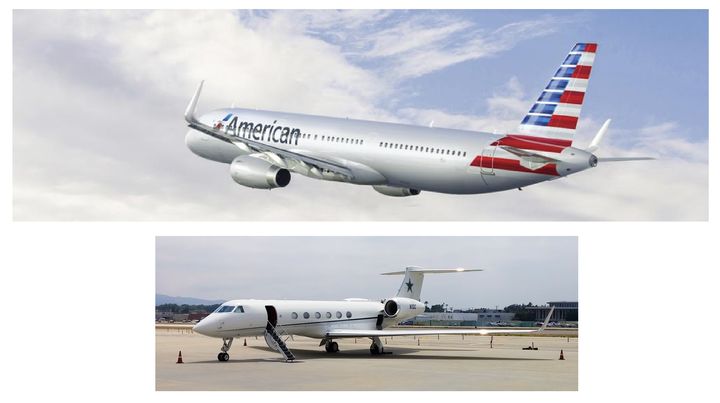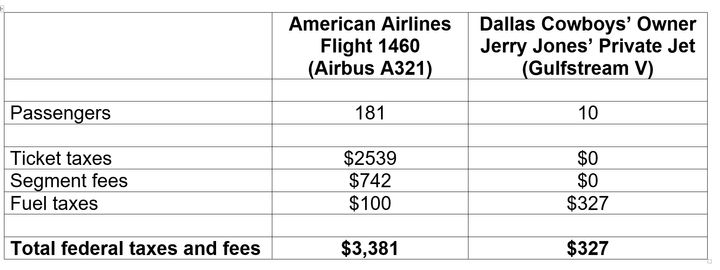
Why does Dallas Cowboys owner Jerry Jones pay 1/10th what 181 American Airlines customers pay for the same ATC services? Read on!
Having worked in and near the airline industry for almost all my career, I’ve seen lots of good ideas to improve service, safety, and reliability, but none as compelling as reforming U.S. air traffic control (ATC) by converting it to an independent, nonprofit organization.
Why? Five reasons:
1. An independent organization would be able to deliver a “next gen,” satellite-based ATC system more quickly and effectively, because it would not be subject to the vagaries of Congressional appropriations and politics, nor the burden of a cumbersome and broken federal procurement process – more fundamentally, experts don’t think the FAA could even deliver a working next gen system.
2. A new system would be able to better accommodate growth, reduce delays, and enable more direct routings, saving time and money, and reducing emissions
3. A system based on user fees would ensure that those who use the system pay their fair share.
4. Nearly all major stakeholders support separation, including, critically, the controllers themselves, who have seen that incremental reforms don’t work.
5. Separating provision of ATC services from the FAA’s safety function removes potential conflict of interest (and follows the recommendation of ICAO, the U.N. entity for civil aviation)
Make no mistake: the current system is safe (there has not been an midair airliner collision in several decades) but it’s out of date. Radar, the core ATC technology, was a way-cool invention, but that was 82 years ago. And, believe it or not, controllers still track flight progress by handing each other little strips of paper. Controllers do an outstanding job, but they need modern tools.
The idea of reforming ATC has bounced around Washington for 30 years, ever since Alaska Senator Ted Stevens and Hawaii Senator Daniel Inouye introduced a 1987 bill to corporatize the process. Since then, there have been four efforts, in 1995 (as part of the Clinton-Gore “reinventing government” initiative), 1999, 2007, and 2016. Last year’s effort, spearheaded by Rep. Bill Shuster (R-PA) got some traction, and it’s likely he will try again soon.
Some 60 nations have already taken this important step, starting with Australia in 1995. My favorite example is the one closest to us: Canada recognized it had no business running air traffic control, and in 1996 created NAV CANADA, an independent, nonprofit user cooperative that may well be the best example of ATC reform done right. Although there was initial opposition and skepticism, every stakeholder group was quickly converted. Notably, rural and small community concern – a flag often waved by U.S. opponents of reform – became a non-issue. Today, in an apples-to-apples comparison of two airline flights of similar distance with the same airplane (a Boeing 737-800), NAV CANADA can provide ATC services for US$1,235 in fees vs. $2,270 in the U.S. Adjusted for inflation, Canadian fees have declined 30% over its 20-year run. And because NAV CANADA cannot earn profits, surpluses are invested in promising new technologies worldwide, such as Aireon, a U.S. company building a satellite-based global aviation surveillance system.
Opposition to this time-has-come idea has dwindled over the years. On Capitol Hill, pretty much the only pols who think ATC reform is a bad idea are reflexive types who cannot imagine a nongovernmental entity managing things better than bureaucrats, and a handful of way-conservatives who say, without much logic, that ATC reform is a “union giveaway.”
Outside of government, the only opponents are the National Business Aviation Association (NBAA), who represent the interests of the people who soar around the country in private jets (e.g., not you and me). The Gulfstream and Learjet cabal love the status quo because they get a huge bargain. Private jets consume a relatively large chunk of U.S. ATC services but pay a tiny share of the costs of running the system. The U.S. is the only nation in the world that does not levy weight-and-distance user fees on the wealthy and big corporations that own bizjets. The Eno Center for Transportation, a nonpartisan think-tank that has worked tirelessly – and effectively – to advance ATC reform, recently did some compelling “corporate welfare” math to compare who pays what on a flight from Dallas to Washington requiring essentially the same ATC services:

The proposed remedy is straightforward:
1. Spin off ATC into an independent non-profit organization
2. Fund the new entity with equitable user fees and enable it to issue bonds
3. Ensure that all stakeholders – airlines, general aviation, business jets, controllers, federal officials – are part of the governing board
This is an idea that needs to take wing, and will benefit virtually every air traveler and other aviation stakeholders.
________________________________________________________________
Rob has been a member of the Aviation Working Group at the Eno Center for Transportation since 2013.
